Organic Farm Utilizes Indiana NRCS To Help Feed Nearly 200 Families
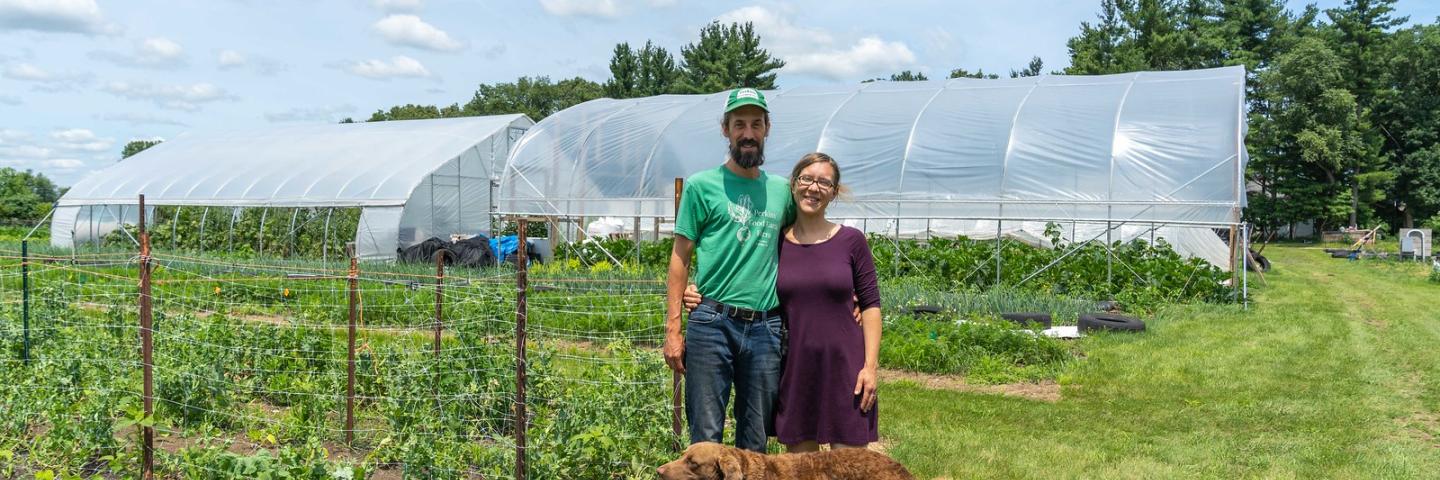
Dan and Julie Perkins worked with Indiana NRCS to implement conservation practices on their organic farm while building a 200 person CSA.
By Carly Whitmore, Public Affairs Intern, USDA-NRCS, Indianapolis
The aroma of ripening tomatoes and fresh herbs and the buzz of bumblebees fill Dan and Julie Perkins’ farm in DeMotte, Indiana. Carrots, banana peppers, garlic and lettuce grow in rows, lined up like toy soldiers, as farm workers harvest what is ready and tend to what isn’t. An organic farm is at work, providing 185 families each week with fresh, local produce.
Dan and Julie bought the 20-acre property that would become Perkins’ Good Earth Farm in 2009 after they, “took a walk in the woods and fell in love with it,” Dan said.
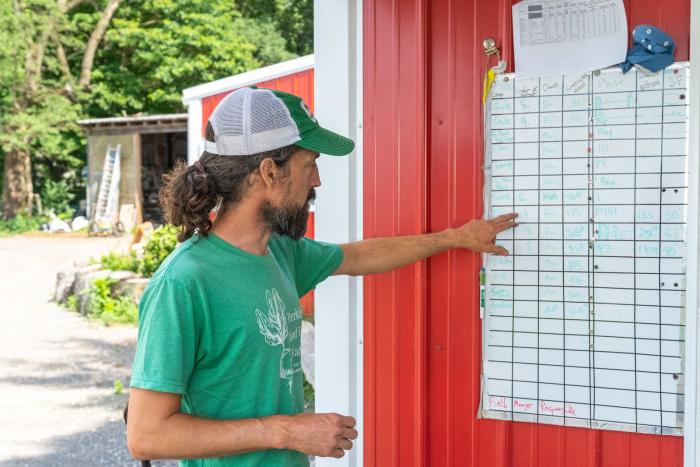
Their intention was to farm at least part of it, and on the surface the plot seemed perfect with seven acres of productive land as well as an existing farmhouse and barn surrounded by 11 acres of woods. As Dan dug deeper, though, and performed a soil test on the site, the results didn’t paint as idyllic a story.
“I took a soil test, and it was 1.5% organic matter” Dan said.
Northern Jasper County Indiana is known for its incredibly sandy soil, which can prove to be problematic for farmers, and the low organic matter content present at the Perkins’ plot was indicative of the hard-to-farm soil.
Dan was very familiar with the soil health principles, a core component of USDA’s Natural Resources Conservation Service’s (NRCS) mission, when he purchased the land in 2009. At the time he worked closely with the NRCS as a Jasper County Soil and Water Conservation District (SWCD) crop advisor and soil and water technician. His role included advising other farmers and landowners about the concepts of soil health. Using his background with the Jasper County SWCD and experience seeing how the soil health principles can help farmers, Dan decided to use them to create fertile, usable soil on his own land.
“You take the soil health principles and you make them work, like you actually implement them,” Dan said, explaining how he transformed his infertile soil. “For us, that was carbon. We needed as much carbon as possible and free leaves from the town provided that.”
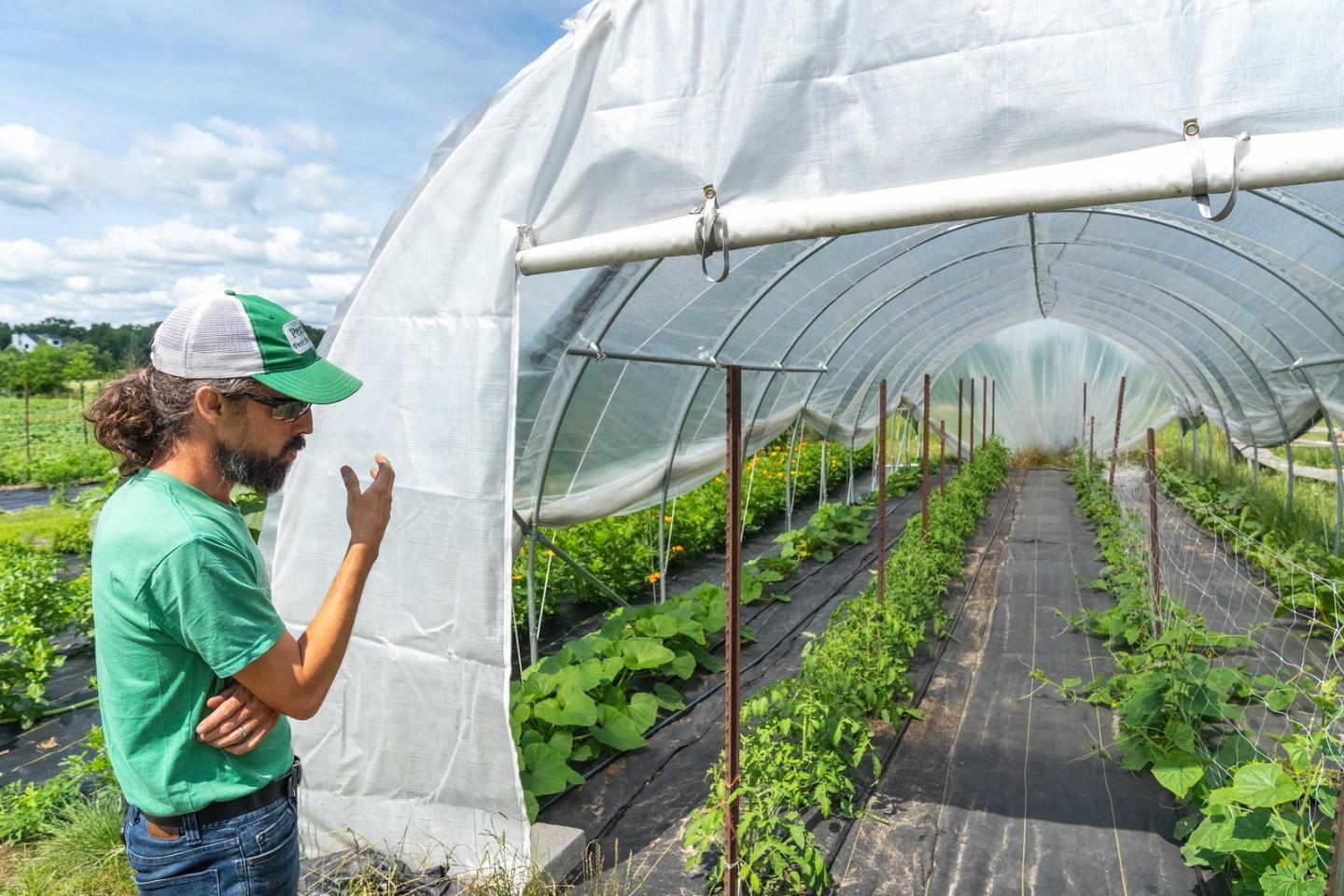
Increasing the carbon content in the soil was just one part of an extensive soil health journey Dan and Julie undertook to transform the area into a flourishing farm.
Perkins’ Good Earth Farm is no-till, meaning that they do not disturb the soil prior to planting – a key component of the soil health principles. Soil disturbance can result in soil compaction and decreased diversity of beneficial insects and microorganisms, all of which are harmful when trying to grow a productive crop.
Perkins’ Good Earth Farm also utilizes cover crops, which helps to provide a physical barrier between the environment and the soil, helping to protect soil from further disturbance. Maximizing soil cover and keeping living roots in the ground year-around through cover crops is an important part of the soil health journey. Keeping soil covered with cover crops decreases erosion and physical damage to soil, allowing beneficial organisms to survive and crop residue to break down, increasing organic matter in the soil.
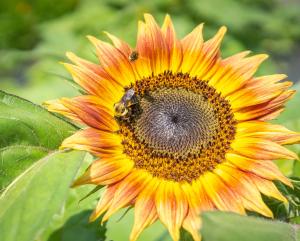
Cover crops also provide living roots continuously throughout the year, another important soil health principle. Continuous living roots replenish soil nutrients and provide food to microorganisms that keep the soil healthy.
Despite their existing knowledge about soil health, Dan and Julie turned to the NRCS for technical and financial assistance multiple times throughout their first decade owning the farm as they transformed it above and below the surface.
Their first venture into Farm Bill programs was through the Conservation Reserve Program (CRP). CRP is administered and paid for by USDA’s Farm Service Agency, with technical assistance provided by NRCS. In 2011, the Perkins enrolled in the program in order to install a windbreak and an upland buffer.
The CRP windbreak helped with their future organic certification process, as windbreaks help to protect land from wind erosion and herbicide and pesticide blow-over. Organic farms do not use synthetic or prohibited herbicides or pesticides, so having a windbreak the border between their farm and a neighbor’s cropland helps the Perkins preserve the organic integrity of the farm.
The Perkins also enrolled three acres into CRP’s Habitat Buffers for Upland Birds program, which removes land from production and creates a habitat for quail, pheasant and other upland birds. Additionally, these buffers provide shelter for other organisms like snakes and pollinators. Since its installation in 2011, the Perkins have seen increased pollinator activity across the farm. Another plus to habitat buffers for the Perkins is the increase predator population, which significantly decreases harmful pests on the farm.
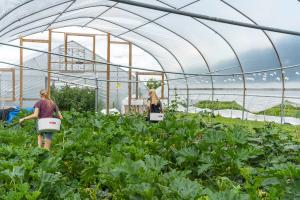
Soon after working with NRCS and FSA to plant the buffers and windbreaks, the Perkins entered into an Environmental Quality Incentives Program (EQIP) contract to build three high tunnels on the farm. Years after their construction, the high tunnels at Perkins’ Good Earth Farm house flourishing tomatoes, fragrant herbs and fresh salad greens, enabling them to grow 12 months out of the year.
“We were paying a mortgage on 20 acres of land, we were beginning farmers…I wouldn’t have gotten that first tunnel [without EQIP],” Perkins said.
An important aspect of Perkins’ farm is its USDA organic certification. Perkins’ Good Earth Farm began the path to organic certification in 2017, utilizing the EQIP Transition to Organic Conservation Activities Plan, which helped offset some of the costs of preparing to be certified. This program had not yet been utilized in the county, and NRCS District Conservationist Kevin Shide said, “Dan was more or less our guinea pig that year because I’d never done one of those plans before.”
Together, Shide and Perkins decided that having a third set of eyes help with the organic certification process would help move the process along.
Shide explained that the Perkins’ farm received help from a technical service provider (TSP) from Illinois who helped create a plan for the farm’s certification. The TSP compiled a list of all the conservation and organic practices already implemented and provided advice for making the certification process less disruptive for the farm.
Dan praised this practice and said, “What’s nice about this is that when we went to go and apply to get certified, there’s a whole section where you have an organic system plan (OSP) that you have to have as a farm and farmer…and that work was already done.”
Perkins’ Good Earth Farm’s pride and joy is their CSA, or community supported agriculture program.
“It’s like a magazine subscription, except for vegetables,” Dan said, “people come to the farm, they pick the produce they want.”
The CSA program includes up to 15 vegetable options and operates in all four seasons. Each season, up to 200 families join the CSA program as members and get their fresh, organic vegetables from Perkins’ Good Earth Farm once a week, or every other week during the winter. In addition to the farm fresh vegetables, Perkins’ Good Earth Farm also offers pick-your-own products to their CSA members. Peas, green beans, pickling cucumbers and herbs are pick-your-own in the summer, with other products available as pick-your-own throughout the year.
The key word in community supported agriculture is community. In addition to the weekly CSA, Perkins’ Good Earth Farm recently opened a farm stand where both members of the CSA and travelers alike can indulge in fresh, local salads, soups, smoothies and local produce. In partnership with other organic farms in the area, Perkins farm stand offers a wide and variety of honeys, coffee beans and homemade granola.
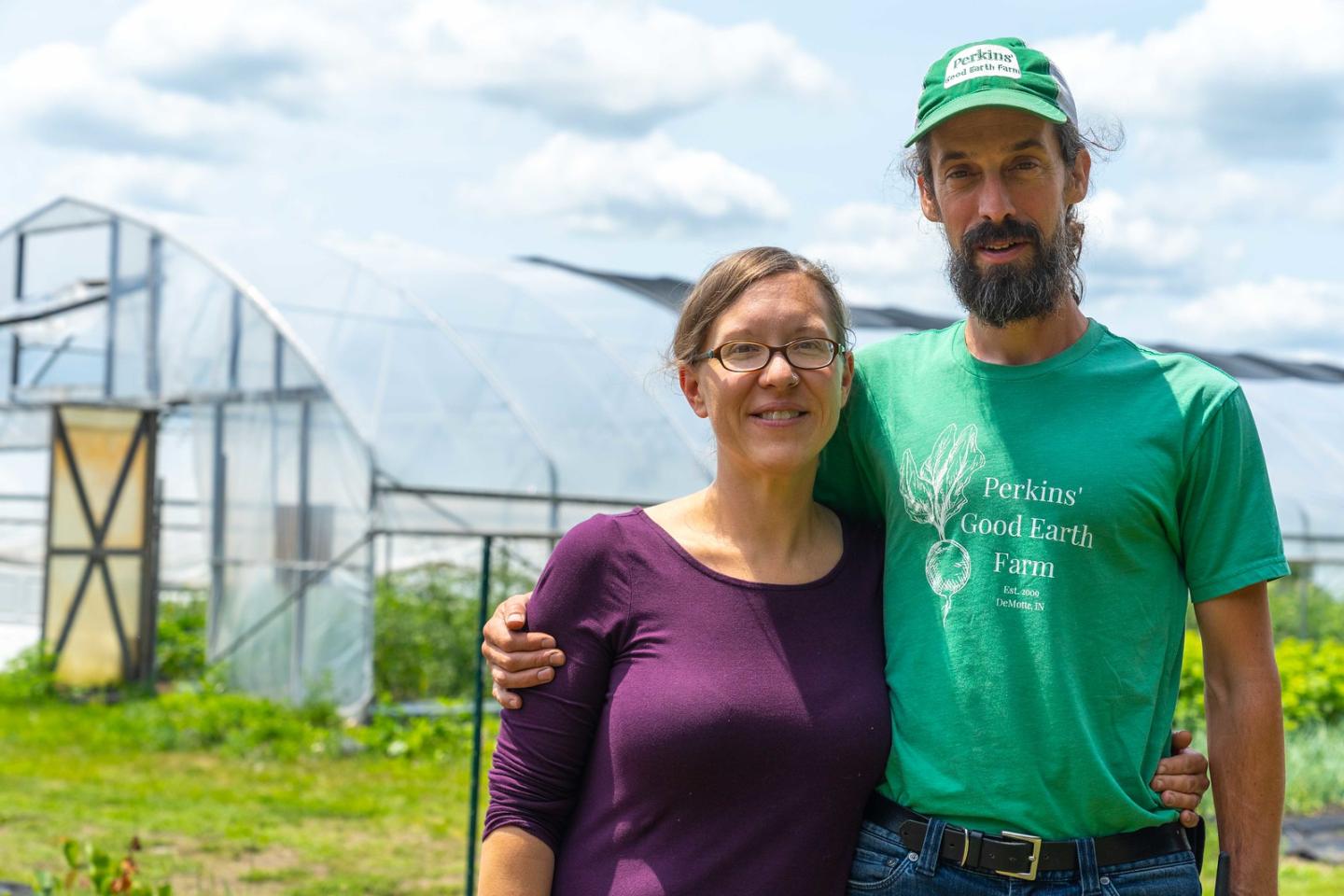
“The number of conversations that happens here at pickup, you know, people become friends or because it’s a small community, they probably already know each other. But they just see each other in a different context,” Dan said, “We create a third space. The idea that in every community, there needs to be a third safe space. And schools can be that, churches can do that…We just created it around food.”
Since 2011, USDA’s NRCS has assisted with seven conservation practices on the farm. From hedgerows and brush management to cover crops and high tunnels, Dan and Julie Perkins have utilized these practices to build and improve their operation.
“I remember distinctly looking through the practice lists. Because I worked for the smaller [farms], I had kind of like an inner look at it… I could see all the practices possible,” Dan said.
Dan said his favorite part of owning the farm is “just having people here and enjoying it.” Sharing the property and the fresh fruits and vegetables with their community is so special, Perkins said, and “we get to share the beauty of the place. They walk around, they see the pollinators, they see the wildlife and all that. That’s just cool.”
Additional Information
Small/Urban Farming - Indiana
NRCS serves all agriculture – large to small, conventional to organic, rural to urban. As American agriculture continues to grow in new directions, NRCS conservation assistance is growing along with it.
Learn MoreEnvironmental Quality Incentives Program - Indiana
The Environmental Quality Incentives Program (EQIP) provides financial and technical assistance to agricultural producers and non-industrial forest managers to conserve natural resources while strengthening their operations.
Learn MoreHigh Tunnel Initiative
A High Tunnel System, commonly called a “hoop house,” is an increasingly popular conservation practice for farmers, and is available with financial assistance through the Environmental Quality Incentives Program (EQIP).
INDIANA NRCS HOMEPAGE
For more information about NRCS programs offered in Indiana and how experts throughout the state can help you address natural resource concerns on your land, visit the Indiana NRCS homepage.

